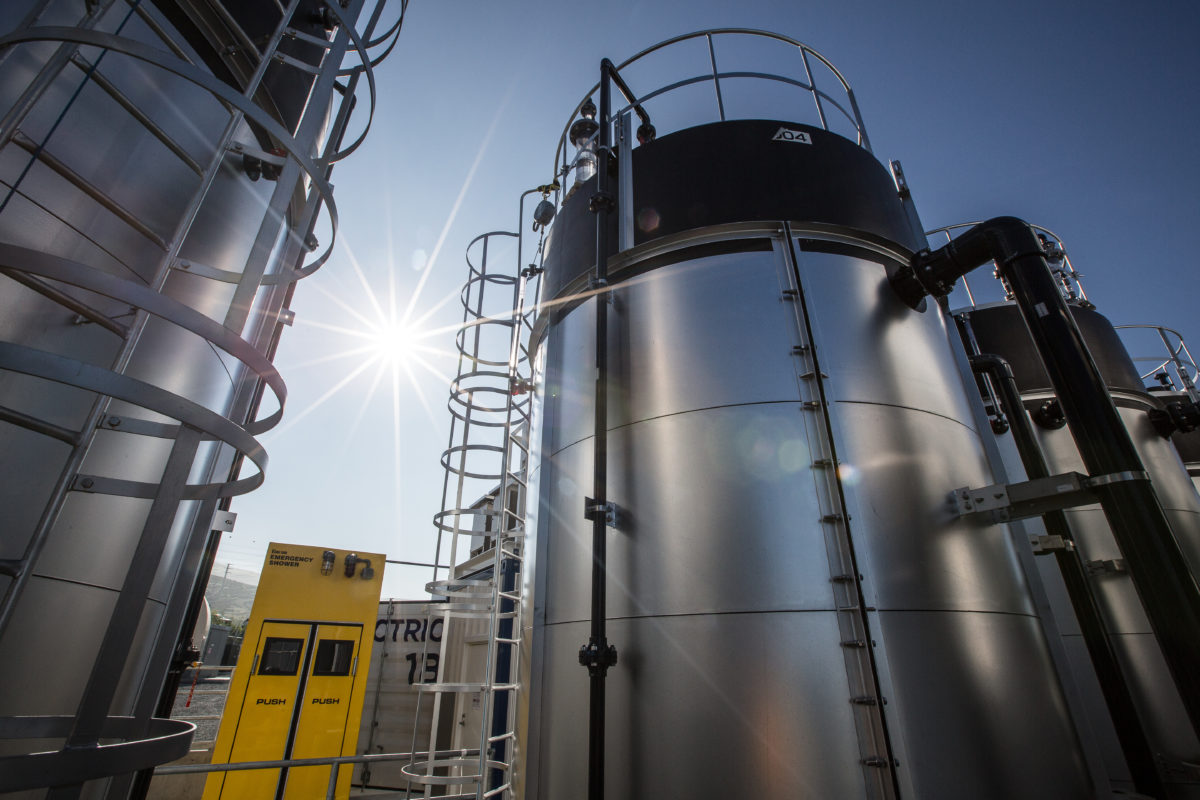
“Climate conditions increasingly threaten the continuity of essential services that our customers expect and deserve from us, which is one of the many reasons we are so focused on innovation and technology,” said SDG&E CEO Caroline Winn. “There is a critical need to develop breakthrough solutions like zero-emissions microgrids to not only minimize disruptions, but to also support the transition to a cleaner, safer and more reliable energy grid of the future.”
Different from more prevalent stacked lithium-ion battery cells, VRF batteries consist of tanks of liquid electrolytes and pumps that charge and discharge electrons to the grid. According to the U.S. Energy Department, VRF technology has several upsides including the potential to store MWh of power in simple designs, the ability to discharge power for up to 12 hours at a time, and the fact that VRF batteries do not present a fire hazard and use no highly reactive or toxic substances, can sit idle for long periods of time without losing storage capacity, and more. Downsides include the fact that VRBs generally have lower energy densities than other battery types (although increased energy density would help reduce costs and broaden applications), the standby current drain can lead to power loss, the technology’s small operating temperature window requires the use of air conditioning systems that can result in significant energy losses, and the cost of the vanadium electrolyte.
During the pilot, the batteries charged when solar energy was abundant and discharged during peak hours to meet demand.
The microgrid demonstration project was completed late last year and included two successful tests. One was a seamless transition in which customers did not experience any loss of power when they were transitioned to the microgrid for electric service. The other was a black start, where microgrid operators established and sustained service after a complete loss of power. Customers experienced a momentary outage before they were transitioned to the microgrid, which operated in island mode separate from the power grid. The microgrid provided energy service as expected, even on a cloudy day when solar power output was not optimal.
SDG&E began operating the first utility-scale microgrid in America in 2013 in Borrego Springs and is currently in the process of upgrading it to run on 100% renewable energy. The utility is building four additional microgrids and is on track to integrate about 145MW of utility-owned energy storage with the local grid in 2022.
"flow" - Google News
February 01, 2022 at 12:13AM
https://ift.tt/8BSeYXuKf
Microgrid project using vanadium redox flow battery – pv magazine USA - pv magazine USA
"flow" - Google News
https://ift.tt/liyj8o7M2
https://ift.tt/iojusvRgC
Bagikan Berita Ini














0 Response to "Microgrid project using vanadium redox flow battery – pv magazine USA - pv magazine USA"
Post a Comment